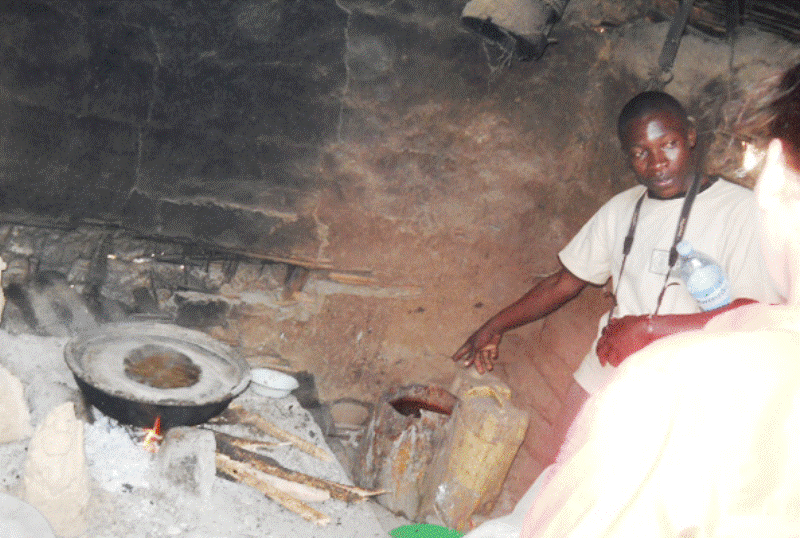- July 24, 2017
- Posted by: Communications
- Categories: Economic Activities in Bunyoro-Kitara, Our History

Kibiro salt processing village is located along the eastern shore of lake Albert about 22 km from Hoima town. Archaeological evidence suggests that salt-making at Kibiro, has been practiced for about 700–800 years.
Listed as a UNESCO World Herritage Site, Kibiro salt mining and production, as one of the key economic trade resources of Ancient Bunyoro-Kitara has sustained the people around for more than 700 years and continues to do so perhaps for posterity from fishing on Lake Albert, they depend on production of ash salt which is obtained by recycling residual earth with fresh soil which is spread on salt gardens for the salty water to get absorbed by capillary system. Through repeated scraping, spreading and heaping of the salty soil over a seven days period, it is leached and the scam is boiled to crystallization point to produce the ash salt. The residual soil from leaching is then mixed with fresh soil to repeat the salt production process. Before the introduction of metallic vessels, pottery ware was used during the leaching and boiling processes and this is evidenced by the rich archaeological depositions of potsherds throughout the village going as deep as 4 meters.

There are different roles that are distributed to different groups where the women are for salt production and the men for fishing. Besides the salt deposits at Kibiro, there is the oldest grinding groove on the large boulder above the hot springs at Mukihanga where the locals perform rituals on scared pools at Mukamira and Mutebere.
Kibiro Salt Mines is located on shores of Lake Albert in Kibiro fishing village just 35km away and an hour out of the Hoima town.
These hot springs are located very close to Lake Albert shore in Kibiri village, Kigorobya County in Bugahya county Hoima district.
The land is under the Kingdom of Bunyoro and perched on a stony plain stretching to ¾ of a Kilometer amidst the lake shore and the base of the approximated 300m escarpment that mark the eastern side of the Albertine rift valley.
The Kibiro Salt Village stands as a unique example of the industry that has maintained its people for years and probably continues to do this for the generations to come. Kibiro Salt Gardens and Hot springs have for long presented a supplement to fishing on Lake Albert for the communities in Kigorobya County.
Residents produce ash salt that is secured following the recycling of residual earth together with fresh soil that is spread on the salt gardens such that the salty waters can be absorbed through the Capillary system.
This is followed by continuous scrapping, spreading and salty soil heaping for a seven days period which is followed by leaching and crystallizing the scam to produce ash salt.
The residual soil that has remained after leaching is then intermingled with fresh soil in order to repeat the process of salt production.
The production of this salt at Kibiro Gardens was and has been the work of the female making it a hereditary occupation in the area.
Prior to the introduction of wood Vessels and metal, ware made and used to do the leaching and boiling which is evidenced by archaeological depositions featuring pot heads spread all over the village that stretch to about 4 meters in depth dating years ago to up to now.



